For reactions involving aqueous electrolytes, rates may be measured via changes in a solution’s conductivity. These examples illustrate how to calculate the rate of formation and disappearance of reactants and products in different chemical reactions. The rate of formation of a product or the rate of disappearance how to buy crypto on exodus of a reactant in a chemical reaction is known as the rate of formation. It is defined as the change in the amount of product or reactant per unit time.
How do you calculate rate of reaction experimentally?
The inner workings of the black box are ordinarily hidden from us, are highly unpredictable and can only be inferred by indirect means. Consider, for example, the gas-phase formation reactions of the hydrogen halides from the elements. Mixing dilute hydrochloric acid with sodium thiosulphate solution causes the slow formation of a pale yellow precipitate of sulfur. Zero-order means that the rate is independent of the concentration of a particular reactant. However, enough C must be present to allow the equilibrium mixture to form.
How do you calculate instantaneous rate of disappearance in chemistry?
- However, when that small amount of sodium thiosulphate is consumed, nothing inhibits further iodine produced from reacting with the starch.
- Comparing the initial rate with the rate at 80s, we can see that it goes down as the concentration decreases.
- By determining the rate of formation of a product, the rate law and rate constant of the reaction can be determined.
- The effect of temperature on reaction rate is usually quantified by the Arrhenius equation, which relates the rate constant of a reaction to the activation energy and temperature.
Comparing the initial rate with the rate at 80s, we can see that it goes down as the concentration decreases. This is a general trend for most reactions; the rate is faster in the beginning when there is more reactants present and it slows down as the concentrations decrease. The rate of the reaction is not constant, and it may be changing with the concentration of the reactants. Just like when we divide the distance we drove by the time we spent on it, we get the average speed which was not necessarily constant all the time. Therefore, what we discussed so far is the average rate of the reaction and the equation using the coefficients is to calculate the average rate of the reaction.
On the other hand, if the rate vs. concentration graph is curved, then the reaction is likely second order or higher with respect to that reactant. Where c is the stoichiometric coefficient of the product and dP/dt is the rate of change of the concentration of the product. You can convert between rate of appearance (or disappearance) and rate of reaction using the reaction stoichiometry. However, if you does not know calculus, just bear in mind that the larger the time interval Δt, the smaller will be the precision of the instantaneous rate. There are several reactions bearing the name “iodine clock.” Each produces iodine as one of the products. Rate Graphs 2 Draw a tangent to the curve of where you want to find that rate of reaction.
The thermodynamics of these reactions are all similar (they are all highly exothermic), but their dynamics sql commands tutorial list of sql commands with example (their kinetics and mechanisms) could not be more different.
Is the rate of disappearance negative?
The products, on the other hand, increase concentration with time, giving a positive number. Since the convention is to express the rate of reaction as a positive number, to solve a problem, set the overall rate of the reaction equal to the negative of a reagent’s disappearing rate. The concentration of reactants and products affects the rate of a chemical reaction. An increase in the concentration of reactants usually results in an increase in the rate of reaction.
How To Calculate Rate Of Disappearance
This information provides insight into reaction mechanisms, enabling better understanding and control over various processes in fields like chemistry, industry, and environmental science. Keep in mind that different reactions require tailored approaches, and always verify your calculated rates with experimentally observed data to ensure accuracy. Select one of the reactants/products involved in the reaction as the basis for your calculation. Make sure that there is reliable data available for measurement throughout the experiment (e.g., concentration changes over time).
- It would have been better to use graph paper with a higher grid density that would have allowed us to exactly pick points where the line intersects with the grid lines.
- Select one of the reactants/products involved in the reaction as the basis for your calculation.
- Enter the initial concentration, final concentration, and the time change into the calculator to determine the rate of disappearance of a reactant in a chemical reaction.
- Since the convention is to express the rate of reaction as a positive number, to solve a problem, set the overall rate of the reaction equal to the negative of a reagent’s disappearing rate.
- In summary, the rate of a chemical reaction is affected by several factors, including temperature, catalysts, concentration, and surface area.
How to calculate the rate of disappearance of a reactant in kinetics?
You can also calculate an average rate graphically by taking the slope of a concentration vs time graph between two points. To calculate the rate of disappearance, you first need to know the balanced chemical equation that represents the reaction. A balanced chemical equation shows the proportion of reactants and products involved in a chemical reaction. It is essential for determining stoichiometric relationships between substances.
In summary, the rate of a chemical reaction is affected by several factors, including temperature, catalysts, concentration, and surface area. Understanding how these factors affect reaction rates is important for predicting and controlling chemical reactions in a variety of contexts. Another way to calculate the rate of formation of a product is by using the rate law of the reaction. The rate law is an equation that relates the rate of a reaction to the concentrations of the reactants.
The initial rates method is a common way to experimentally determine the rate of formation of a product. This method involves measuring the initial rate of the reaction at different concentrations of reactants. By measuring the initial rate of the reaction, the rate law can be determined. The rate law is an equation that relates the rate of the reaction to the concentrations of the reactants.
Key Equations
The process is repeated using a smaller volume of sodium thiosulphate, but topped up to the same original volume with water. This is an example of measuring the initial rate of a reaction producing a gas. A familiar example is the catalytic decomposition of hydrogen peroxide (used above as an example of an initial rate experiment). The quickest way to proceed from here is to plot a log graph as described further up the page. All rates are converted to log(rate), and all the concentrations to log(concentration).
However, when that small amount of sodium thiosulphate is consumed, nothing inhibits further iodine produced from reacting with the starch. At this point the resulting solution is titrated with standard sodium hydroxide solution to determine how much hydrochloric acid is left over in the mixture. The hydrogen peroxide produced subsequently oxidizes colorless iodide ion to yield brown iodine, which may be visually detected. Some strips include an additional substance that reacts with iodine to produce a more distinct color change. It is clear from the above equation that for mass to be conserved, every time two ammonia are consumed, one nitrogen and three hydrogen are produced.
Before calculating, it’s essential to have information about experimental variables such as concentrations crypto weekly significant public listing and trading desk coming up of reactants/products, temperature, and pressure. These variables affect reaction rates and must be considered when obtaining accurate results. Therefore, to keep the reaction rate applicable and identical to all the reactants, and components, we divide their rates of depletion and formation by their coefficients in the chemical reaction. Another useful tool for analyzing reaction rates is the rate vs. concentration graph. These graphs plot the rate of formation of a product against the concentration of one or more reactants.
Leave a Reply
